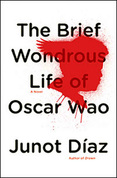 I received these paper-grading guidelines when I was an undergraduate at Princeton University. They were so helpful I held on to them and used them when I myself began teaching English. After all these years, I still have them and still find them illuminating. These guidelines are useful not only to students and teachers but also to professional writers, who even at their advanced level of proficiency can benefit from measuring their work against these high benchmarks. PAPER-GRADING GUIDELINES “D” Essays and Below These are some of the general tendencies that mark inferior writing:
“C” Essays CONTENT: The writing may be padded and repetitious, and the tendency to keep thought on a high level of generality without sufficient reference to detail or specific supporting illustrations causes the prose to seem thin. There is little indication of the writer’s intellectual involvement with the subject. Summary will predominate over analysis. The surest mark of a “C” essay is the preponderance of self-evident statements—all true, often clearly phrased, but predictable and often trivial. FORM: Most “C” writers will reveal that they are aware of organization, but to them form is formulaic. They have real difficulty envisioning form as setting a direction for thought, or as a way to set expectations for the reader. DICTION: “C” writing depends on the cliché. Lapses into jargon, and/or rapid shifts between the highly formal and the markedly colloquial, are common. The diction of the “C” essay is best explained as having a lack of range. The writing is undistinguished because the writer has limited verbal resources with which to work. MECHANICS AND STYLE: “C” writing may be perfectly correct, but often lacks a sense of ease with language—at best, perfunctory and uninspiring. “C” QUALITY WRITING USUALLY DEMONSTRATES:
“B” Essays CONTENT: The material of the “B” essay shows signs of independent thought and gives evidence of the writer’s active engagement with the topic. Something illuminating is said, in the sense that an insight is presented in such a way that the reader sees anew. FORM: “B” writers show a clear sense of order. They are conscious of planning and crafting their material to relate it to the central point or thesis being presented. Their formal control should also show evidence of transitions and thematic and verbal echoes that hold the thoughts together. DICTION: “B” writers, like “A” writers, have developed a vocabulary that allows them choices, and a sense of linguistic variety and freedom. They are able to select the “right” word or turn of phrase from a wide range of possibilities. MECHANICS: “B” writers turn in clean, correct essays. Few errors in the prose interfere with the writer’s thoughts. Control of grammar is sure. STYLE: “B” writers are aware of rhetorical strategies and can often call on devices such as parallelism, repetition, contrast and the rhetorical question with effect. Mature use of subordination permits concise, varied prose. The “B” essay has both distinguishable strengths and flaws, but the flaws are not so numerous or serious as to throw doubt upon the writer’s proficiency. The writer is in control, investing the essay with purpose, direction and strategy. “B” QUALITY WRITING USUALLY DEMONSTRATES:
“A” Essays The clearest difference between the “B” writer and the “A” writer is that the “A” writer often brings intellectual and imaginative resources to the task of writing in order to transform both material and language in some unusual way. “A” writing is usually distinguished by:
Perhaps the most marked characteristic of the “A” writer is the inability to suppress the personal voice—the sense of a lively intelligence behind the page—whether such emerges through viewpoint, metaphor, vocabulary or any other quality that announces the writer’s individuality. “A” writers have something worthwhile to say, and say it. They read perceptively, support their insights with judiciously selected evidence, and often respond by linking ideas with other ideas, books with other books. What they see is unexpected, what they write is fresh.  Whether you’re a writer or editor, student or teacher, you may sometimes wonder how to explain “voice” or how to use it effectively in your writing. There are two major definitions of the term:
Aside from defining “voice,” the below slideshow does three things. It explains that voice is created by the writer’s diction, syntax (including sentence length) and tone; examines the often false dichotomy between voices that are written/formal and those that are spoken/informal; and provides several examples of first-person prose, each exhibiting a different voice. Examples include excerpts from the following texts: The Brief Wondrous Life of Oscar Wao by Junot Díaz, Lolita by Vladimir Nabokov, “On Being a Cripple” by Nancy Mairs, The Great Gatsby by F. Scott Fitzgerald, “Mother to Son” by Langston Hughes, Edisto by Padgett Powell, Notes from the Underground by Fyodor Dostoyevsky, The House on Mango Street by Sandra Cisneros and “Issues I Dealt With in Therapy” by Matthew Klam. In its examination of “voice,” the slideshow focuses mainly on the second definition above, but its findings are also relevant to an understanding of “voice” as defined in the first definition. View the slideshow here: Download the file:
|
A blog about Archives
May 2016
Categories
All
|
||||||
Company |
|
© Copyright 2015. Prose Wizard. All Rights Reserved.
 RSS Feed
RSS Feed